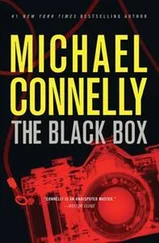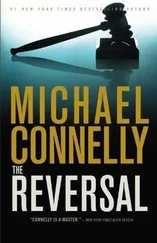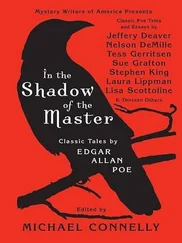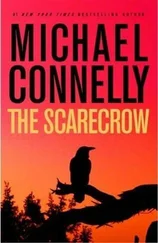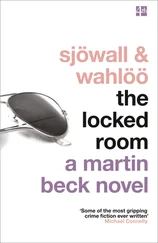It was now the first week of April, and I was appearing on behalf of Andre La Cosse before the Honorable Nancy Leggoe in Department 120 of the downtown Criminal Courts Building. We were six weeks out from trial on the case and Leggoe was taking testimony in regard to the motion to suppress that I had filed shortly after the preliminary hearing in which La Cosse was held to answer.
La Cosse sat beside me at the defense table. He had been in jail going on five months now and the pallor of his skin was just one indication of the deterioration within. Some people can handle a stint behind bars. Andre wasn’t one of them. As he told me often when we communicated, he was losing his mind in captivity.
Through the exchange of discovery materials that began in December, I had received a copy of the video of Andre La Cosse’s interview with the lead investigator on the Gloria Dayton murder. My motion to suppress claimed that the interview was actually an interrogation and that the police had used trickery and coercion to elicit incriminating statements from my client. Additionally, the motion claimed that the detective who interrogated La Cosse in a small windowless room at West Bureau ran roughshod over his constitutional rights, not properly administering the Miranda warning regarding his right to an attorney until after La Cosse had made the incriminating statements and was placed under arrest.
During the interrogation La Cosse had denied killing Dayton, which was good for our side. But what was bad was that he had given police evidence of motive and opportunity. He admitted that he had been in the victim’s apartment on the night of the murder and that he and Gloria had argued about the money she was supposed to have been paid by the client at the Beverly Wilshire. He even acknowledged that he had grabbed Gloria by the throat.
Of course, this evidence La Cosse had provided against himself was pretty damning, and it served as the core of the DA’s case, as demonstrated in the preliminary hearing. But now I was asking the judge to eliminate the interview from the case and not allow a jury to see it. In addition to the intimidation practices employed by the detective in the room, La Cosse had not been read his rights until after he had mentioned that he had been in Dayton’s apartment in the hours before her death and that there had been an argument.
Motions to suppress are always the longest of long shots but this one was worth a try. If I got the video of the interrogation kicked, the entire case would change. It might even tilt in Andre La Cosse’s direction.
The prosecution, led by Deputy DA William Forsythe, began the hearing with Detective Mark Whitten’s testimony about the circumstances of the interview and then introduced the video recording of the session. The thirty-two-minute video was shown in its entirety on a screen mounted to the wall opposite the courtroom’s empty jury box. I had already watched it numerous times. I had my video time counts and questions ready when Forsythe finished his direct examination of Whitten and turned the witness and the remote control over to me. Whitten knew what was coming. I had laid into him pretty good when he had testified during the preliminary hearing. This time the assault would take place in front of Judge Leggoe, who was assigned to hear the case after the prelim. There was no jury to play to. No gods of guilt. I remained seated at the defense table, my client in his orange jumpsuit next to me.
“Detective Whitten, good morning,” I said as I pointed the remote at the screen. “I want to go back to the very beginning of the interrogation.”
“Good morning,” Whitten said. “And it was an interview, not an interrogation. As I said before, Mr. La Cosse voluntarily agreed to come to the station to talk with me.”
“Right, I heard that. But let’s take a look at this.”
I started playing the video, and on the screen the door to the interview room opened and La Cosse entered, followed by Whitten, who put his hand on my client’s shoulder to direct him to one of the two chairs on either side of a small table. I stopped the playback as soon as La Cosse was seated.
“So, Detective, what are you doing there with your hand on Mr. La Cosse’s upper arm?”
“I was just directing him to a seat. I wanted to sit down for the interview.”
“You were directing him to that particular chair, though, correct?”
“Not really.”
“You wanted him facing the camera because your plan was to draw a confession from him, correct?”
“No, not correct.”
“Are you telling Judge Leggoe that you did not want him in that particular seat so that he would be in view of the hidden camera that was in that room?”
Whitten took a few moments to compose an answer. Bullshitting a jury is one thing. But it grows increasingly risky to mislead a judge who has been around the block a few times.
“It’s standard policy and practice to place the interview subject in the seat facing the camera. I was following policy.”
“Is it standard policy and practice to videotape interviews with subjects who have come to the police department for a ‘conversation,’ as you put it in your direct testimony?”
“Yes, it is.”
I raised my eyebrows in surprise but then reminded myself that it wasn’t serving my client well to bullshit the judge either. This would include feigning surprise at an answer I knew was coming. I moved on.
“And you insist that you had not classified Mr. La Cosse as a suspect when he came to the police station to talk to you?”
“Absolutely. I had a completely open mind about him.”
“So there was no need to give him the standard rights warning at the top of this so-called conversation?”
Forsythe objected, saying the question was already asked and answered during his direct examination. Forsythe was midthirties and lean. With a ruddy complexion and sandy hair, he looked like a surfer in a suit.
Judge Leggoe overruled the objection and let me go with it. Whitten answered the question.
“I didn’t believe it was necessary,” he said. “He was not a suspect at the time he voluntarily came into the station and then voluntarily entered that room for the interview. I was just going to take a statement from him, and he ended up saying he had been in the victim’s apartment. I was not expecting that.”
He delivered the answer just as I am sure he had rehearsed it with Forsythe. I moved ahead in the video to a point where Whitten excused himself from the room to go get my client a soda that the detective had offered. I froze the image of La Cosse left alone in the room.
“Detective, what would have happened if my client had decided while alone in there that he had to use the restroom and got up to leave?”
“I don’t understand. We would have allowed him to use the restroom. He never asked.”
“But what would have happened if he’d decided on his own to get up from the table at this point here and open that door? Yes or no, did you lock it when you left the room?”
“It’s not a yes or no answer.”
“I think it is.”
Forsythe objected and called my response badgering. The judge told the detective to answer the question the way he saw fit. Whitten composed himself again and fell back on the standard out: policy.
“It is the policy of the department not to allow any citizen unescorted access to work areas of police stations. That door leads directly to the detective bureau, and it would have been against policy for me to allow him to wander through the squad unattended. Yes, I locked the door.”
“Thank you, Detective. So let me see if I have this right so far. Mr. La Cosse was not a suspect in your case but he was locked in this windowless room and was under constant surveillance while in there, correct?”
Читать дальше



